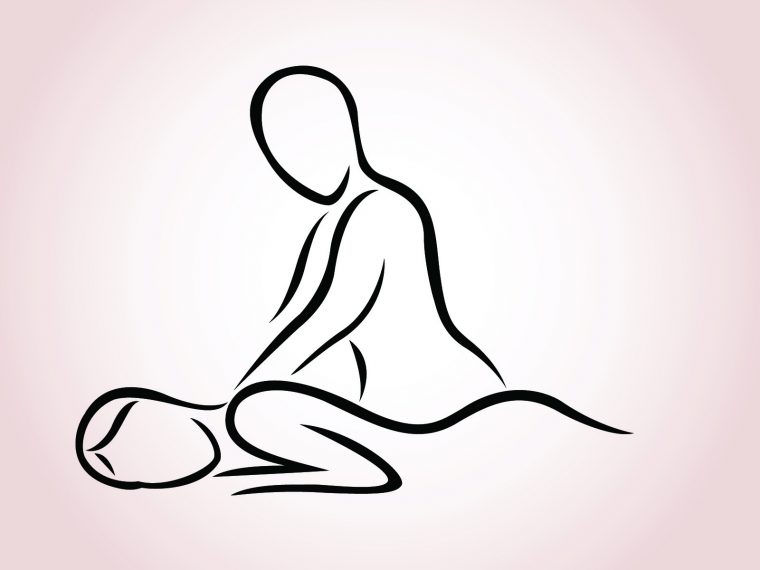
Dr. Susan LaCombe Psychologist / Therapeutic Guide
Holistic massage is an ideal complement to your trauma treatment. When I use the term "holistic" it's meant to include both the mind and body.
Simply finding a massage therapist for relaxation without therapeutic techniques typically generates effects that last mere hours or only a few days.
The idea of working holistically with the body, means working to generate lasting change, change that gets to the core of our hurts and pains.
I was honored to interview Erika Moore RMT and long time proponent of holistic massage. I then 'coerced' her to tell us more about her work with therapeutic massage. As a specialist in post-trauma holistic therapy, she has a unique perspective on how to effectively interrupt the pain cycle once and for all.
More people are using therapeutic massage for chronic pain management. Why doesn't it last?
Well, maybe there's a missing piece.
She begins with a story about "Cindy" a personification that reflects a common experience amongst her clients.
By Erika Moore
January 16, 2011.
Updated: July 7, 2024
Reviewed by: Susan LaCombe Ed.D. R. Psych
As Cindy navigated the early morning rush hour traffic she felt the knot in her stomach tighten. Her neck stiffened and before she knew it she had a terrible headache.
At work she felt drained. By the end of the day she had barely enough energy to make a quick, micro-waved dinner. By eight o'clock she pulled the blinds and took refuge in bed.
Cindy was depressed. Surely there was more to life she thought?
Cindy was in a great deal of pain when she decided to visit a registered massage therapist for the first time. Her biggest complaint was that her neck never seemed to relax.
The therapist massaged the tissues in her upper body, helping to increase blood flow and flush out toxins. Cindy sighed and found herself relaxing; she drifted away as the massage therapist worked her magic.
When Cindy got up to leave she felt fantastic!
The next morning Cindy was free of pain but about half way to work the tension started to creep back up her neck. By the time she was at work she had a small headache - not as bad as usual, but it was there nonetheless.
Cindy was frustrated. Maybe she needed to see a massage therapist more often?
So many people who come to see me struggle with their energy level, sore spots, and headaches or pains that never seem to go away.
Seeking solace through therapeutic touch can be a wonderful start to caring for our bodies. But many clients wonder if there is a way to make those benefits last through the week, or longer.
Making Lasting Changes with Therapeutic Massage
Often we're unable to avoid or change those daily activities that cause our aches, and so we feel trapped. We begin to see our body as an unwilling participant in the rigors of our daily life, or even as the enemy.
We try to ignore the pain and continue with our lives. But the energy we use up trying to ignore the pain can leave us feeling even more drained.
However, there is hope. New information gained from the study of the nervous system and its influence on soft tissue now enables massage therapists to treat this kind of chronic pain more effectively.
Neuroscience shows us that a traumatic experience (such as a car accident or a bullying incident at school) given certain circumstances, gets "replayed" again and again in our nervous system.
As the event is revisited, the nervous system sends messages to the muscles - sometimes the message is to tense, sometimes it is to totally suppress all movement.
This movement, or suppression of movement, often occurs without us noticing it. Though the movement is very small, the constant repetition eventually takes a toll. The tissue begins to suffer and chronic pain sets in.
This movement, or suppression of movement, often occurs without us noticing it. Though the movement is very small, the constant repetition eventually takes a toll. The tissue begins to suffer and chronic pain sets in.
What do you mean by 'replaying' the event in my nervous system, and why does the brain do this?
The natural response to any dangerous situation is to get to safety. A great deal of energy in our body is mobilized as we prepare to fight or flee. And if the situation is overwhelming, the nervous system protects us with a "freeze reaction". We become immobilized.
In Cindy's case, the root cause of her physical symptoms can be found in the car accident when she was just sixteen.
She was stopped at the light when a speeding car approached from behind. At the last second she looked in the rear-view mirror and saw it coming. Moving into the intersection was not an option, neither was stopping the oncoming car. All she could do was sit and wait for impact.
Cindy froze. She gripped the steering wheel and braced for the crash.
Whenever Cindy drives a car in busy traffic today, her brain and her nervous system start to replay the incident. This is called being 'triggered'. Essentially the brain tells the body to re-act (i.e. to feel) as though she were in the traumatic situation (i.e the original crash) all over again.
In Cindy's case the constant triggering when she's at the wheel results in the chronic tensing in her arms and neck. This eventually causes her pain, headaches and fatigue.
The good news - when your body stops 're-playing' the traumatic event, the symptoms disappear!
Hearing and accepting the body's messages can be very liberating. This is the first step in in eliminating that traumatic 'replay' in your body and mind. Getting rid of that 'replay' is the key to getting rid of the chronic pain.
Cindy never had time to deal with the fear she experienced during her car accident - in a sense it became 'frozen' in her body. She had been busy with university exams at the time and had no one to talk to about the ordeal.
In fact, she had entirely forgotten about it until we started working together.
Why wasn't Cindy able to recall the incident and resolve it on her own? Sometimes we've ignored the body's messages for so long that we need help in listening.
At the same time the messages the body carries can also be difficult to tolerate. Without skilled and caring support, they'll overwhelm your capacity to process them, and you'll eventually become immune to their influence.
How to release the trauma without becoming overwhelmed.
Whenever I go for a massage I consciously choose whether it's going to be a 'treat' or a 'treatment'.
For me, a 'treat' involves having someone massage my tissue and muscles while I drift away and simply enjoy. But when I get a 'treatment' I remain more alert and actively involved.
Staying actively aware of what's going on in your body might sound a little odd. How can we not be alert you might think?
The reality is that the subtle flavours and textures of our body sensations can change as we give them our attention, which makes tracking those sensations quite challenging. For example, what we first identify as 'pain' sometimes starts to feel hot or cold, or even numb.
But working with a massage therapist makes it easier to stay connected to those shifting sensations. After some practice in tracking these inner sensations, you may begin to notice that your body is in a constant state of flux during the day - adapting and changing to your thoughts and environments.
Many different techniques can be used to banish unhelpful patterns that cause chronic pain. But whichever techniques we use, I'll always make sure you're never overwhelmed as you experience little bits of your tension, pain and holding patterns.
This is known as 'titrating' your experience. Titration is a chemistry technique that describes the process of adding two chemicals together very slowly, to keep them from interacting violently.
One tool I often use to help my clients titrate their experience is called resourcing.
Whenever we're excited or feel threatened our pulse might quicken and certain muscles might start to flex. When we again feel safe and calm, our muscles relax, we heave a sigh of relief, and our pulse begins to slow.
Anything that helps trigger that 'relaxation response' is a resource. If imagining a gentle waterfall helps you to breathe that sigh of relaxation, then it's a resource. (But if you almost drowned in a waterfall it's unlikely to be a resource for you!) That's the tricky thing about resources - they're very specific to each person.
In Cindy's case we were able to establish that hiking in the woods helped her connect with nature and gave her a sense of safety and relaxation. So when we began to explore the areas of her body that were affected by the accident, we used the imagery of exploring a forest to help Cindy titrate the heightened sensations in her body.
I helped Cindy discover several resources she could use during the day. Eventually she was able to access these resources on her own, without my prompting or presence. This enabled her to access that feeling of safety and relaxation when she was driving, and thus reduce the tension and discomfort in her body.
My Personal Musings
Over many years I've built my own personal collection of resources and can attest to the wonderful sensations of safety, peace, and relaxation it allows me to access. Of course, I'm not always relaxed, peaceful and safe, but I can access those feelings easily and readily whenever life begins to feel overwhelming.
When I approach working with new clients I bring to the (massage) table all the traditional massage therapy skills that make our bodies feel so lovely.
But I also bring a deep understanding of the need to enter into a 'conversation' with the tissues and muscles that are in pain. By working with your body and its' sensations you can safely and gently release those chronic, unhelpful patterns.
The body will naturally and effortlessly take us on a journey as it expresses the way it wants to move, to avoid, or to invite touch.
And as that journey unfolds, I'll be there with you, supporting and nurturing you wherever it leads us.
myShrink Note:
Erika will soon be retiring however you might still catch her here: Erika Moore RMT.

